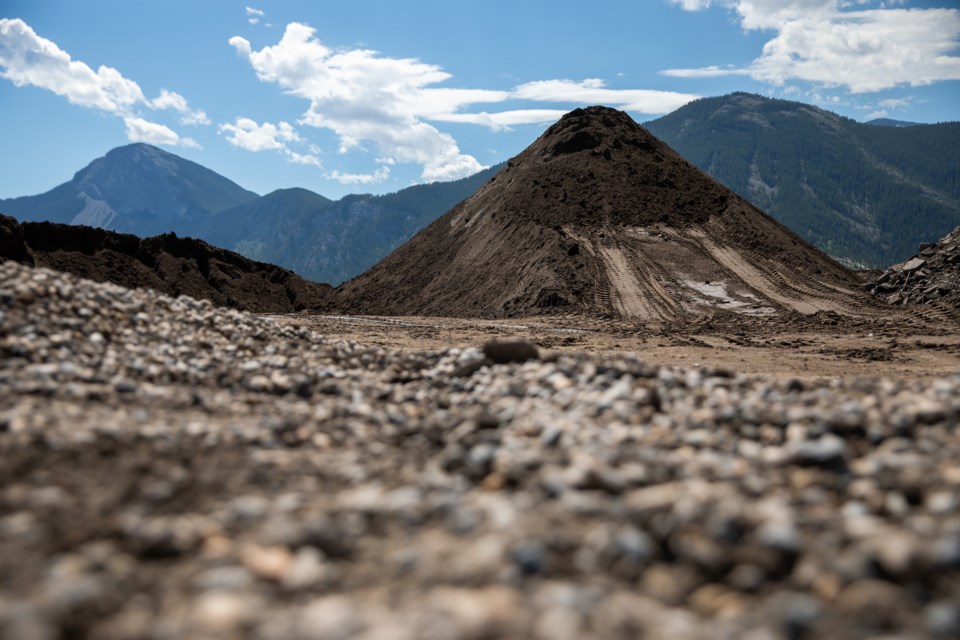EXSHAW – An expensive soil remediation will be taking place at the Francis Cooke landfill after sections of soil were found to be contaminated.
The remediation will cost about $100,000 – though may be covered by insurance – and take a about a month to complete. Roughly 4,000 square metres (6,800 tonnes) of petroleum hydrocarbon was found to have the affected soil.
“There is an indication from insurance companies that they will cover some of the costs,” said Paul Ryan, chair of the Bow Valley Waste Management Commission. “To what extent is not clear right now. However, we will be making a claim. With all insurance companies, it’s how they review the claim and what they consider to be culpability, as opposed to being a victim of something. In other words, did we cause it, or did somebody else cause it and we have to deal with it?”
The remediation was needed after Alberta Environment and Parks requested a sample in December. Ryan said the provincial ask was made after a complaint about what had unknowingly been hauled in ultimately tested for low levels of benzene, toluene, ethylbenzene and xylene (BTEX), which naturally occur in crude oil and found in natural gas and petroleum deposits, and exceeded Alberta Tier 1 soil remediation limits.
The remediation work was approved by the province and will have Ridgeline Environment complete the work.
In December, 36 samples were completed on metals and 14 for petroleum hydrocarbons. Seven of them exceeded the guidelines for benzene and/or toluene, while the rest were within the provincial environmental guidelines, a staff report stated.
The contamination will also lead to stricter protocols coming into place to avoid a reoccurrence, but not so strict as to heavily affect the construction sector.
“We're now going to require a higher level of testing before you can bring it in, so that we're confident we're not going to go through this again,” Ryan said. “Our only other choice is to not accept it at all, but we service the construction industry so we're doing our best to accommodate them. Yes, costs are going to go up, but it's much better and much lower than the cost of having to transport it to a Class I landfill that will accept contaminated material.
“Our crew are very tuned to the environment. As a matter of fact, they’re rabid about what people take into the landfill. If they catch someone bringing something in that doesn't belong there. God help them. I know our staff are going to do their best to make sure that we can reduce our environmental footprint and our costs at the same time.”
The remediation work will have a modified trommel unit, which is a mechanical screening device to separate materials, treat about 500 to 800 square metres of soil per day, depending on the moisture in the soil, according to the report. The trommel unit will collect and screen the material, which has biofilters enclosed in it, and fresh air is pumped in then vacuumed out. The soil will be treated to collect thick biomass and capture vapours and odours.
Ridgeline Environment will monitor the air surrounding the trommel and field measurements will be recorded, stated the report.
The trommel will be above and adjacent to the material soil, with the impacted soil being moved by two excavators to the top of the pile onto the new liner and a hoe will feed the contaminated soil into the loader then away from the trommel to be temporarily stored and tested for additional samples.
A 30 millimetre geosynthetic plastic liner with a cloth underlay to prevent ripping will be used as a barrier layer for the 40 metre by 50 metre bermed and lined containment cell prepared to contain 2,000 square metres of material.
Once the 2,000 square metres of soil is screened, it will be moved to stockpile in the landfill and the remainder will be processed.
The report noted a sample will be collected for each 50 square metres of processed soil and 10 per cent of duplicate samples will be collected for quality assurance and quality control. Additional samples will be checked for particle site analysis and all samples analyzed in a 24-hour time period.
After the soil treated is moved, the area it had been located in will be sampled in a grid pattern to look at the potential impact of the petroleum hydrocarbons, the report stated, with the plan to collect 20 samples to be gathered and analyzed in a five to seven day period.
The report highlighted it is expected to take two days to prepare the site and roughly seven total workdays to process the material. A final report will be prepared within two weeks after all test results are received.
The initial work of a new liner was started in May and the entire installation should be finished by June. Once the material is processed – which is expected to take about three weeks – it should be treated, remain at the landfill to be used in daily as intermediate and final cover, according to the report.
“We don’t want to put anything into the landfill that we don’t have to,” Ryan said.
People can visit www.tr3energy.com/modified-trommel.html to see a video of the process.



